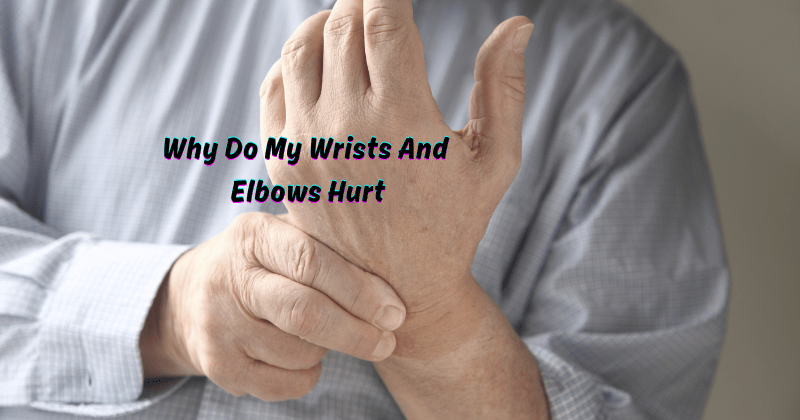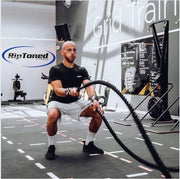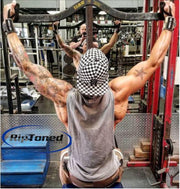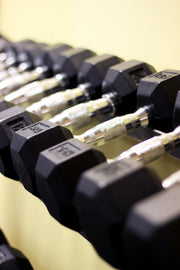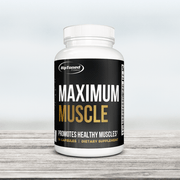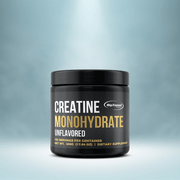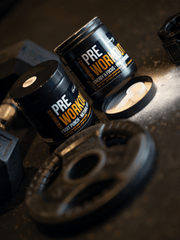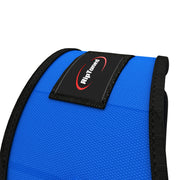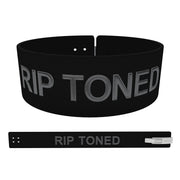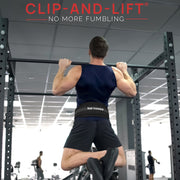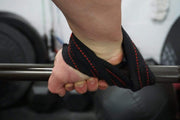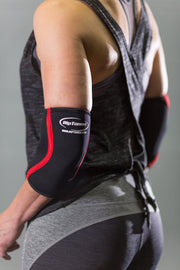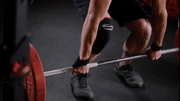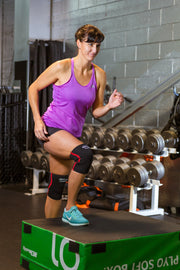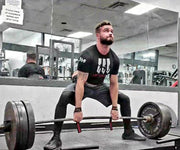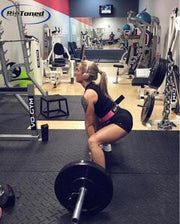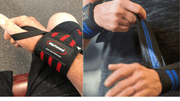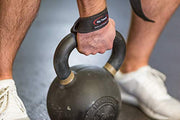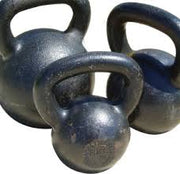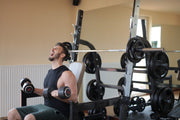In this fast-paced world, our hands and arms have become integral parts of our daily lives. From the moment we wake up until we go to bed, they are constantly performing tasks such as typing on keyboards, using smartphones, carrying heavy objects, and much more. With all these activities, it's no wonder that sometimes our wrists and elbows start hurting.
But why do our wrists and elbows hurt? What causes this discomfort and pain? In this article, we will explore the common reasons for wrist and elbow pain and provide tips on how to alleviate them. We will also discuss ways to prevent these issues from happening in the future.
Causes of Wrist And Elbow Pain
Golfer's Elbow
Golfer's elbow, also known as medial epicondylitis, is a condition that causes pain and tenderness on the inner side of your elbow. This condition is caused by repetitive wrist flexion or gripping activities, such as swinging a golf club, hence the name "golfer's elbow." It can also be triggered by other activities that involve repetitive wrist movements, such as painting or using a screwdriver.
Symptoms:
- Pain and tenderness on the inner side of your elbow
- Weakness in your hand grip
- Stiffness in your elbow joint
- Numbness or tingling sensation in your fingers
Treatment:
- Rest and avoid activities that aggravate the pain
- Ice therapy to reduce inflammation and pain
- Strengthening exercises for wrist and forearm muscles
- Use of a brace to support and protect the injured area
Tennis Elbow
Tennis elbow, also known as lateral epicondylitis, is a condition that causes pain and tenderness on the outer side of your elbow. It is caused by overuse or repetitive strain on the wrist extensor muscles, which can occur during activities such as playing tennis, painting, or using a computer mouse.
Symptoms:
- Pain and tenderness on the outer side of your elbow
- Weakness in your wrist and hand grip
- Stiffness in your elbow joint
- Numbness or tingling sensation in your fingers
Treatment:
- Rest and avoid activities that cause pain
- Ice therapy to reduce inflammation and pain
- Stretching exercises for wrist extensor muscles
- Use of a brace to support and protect the injured area
Carpal Tunnel Syndrome
Carpal tunnel syndrome is a condition that causes numbness, tingling, and weakness in your hand due to pressure on the median nerve. This nerve runs from your forearm to your hand through a narrow passageway called the carpal tunnel. Activities that involve repetitive wrist movements, such as typing or using a mouse, can contribute to this condition.
Symptoms:
- Numbness, tingling, and weakness in your hand
- Pain and discomfort in your wrist
- Difficulty gripping objects
Treatment:
- Rest and avoid activities that aggravate the symptoms
- Wearing a wrist splint to keep your hand in a neutral position
- Stretching exercises for wrist and hand muscles
- In severe cases, surgery might be necessary to relieve pressure on the median nerve.
Repetitive Strain Injury
Repetitive strain injury (RSI) is a term used to describe various musculoskeletal conditions caused by repetitive strain on muscles, tendons, and nerves. This can occur from any activity that involves repetitive movements, such as typing, assembly line work, or playing an instrument.
Symptoms:
- Pain, numbness, or tingling in the affected area
- Stiffness and weakness in the affected muscles
- Fatigue and difficulty performing tasks
Treatment:
- Rest and avoid activities that cause pain
- Stretching exercises for affected muscles
- Use of ergonomic equipment to reduce strain on muscles and joints.
Arthritis
Arthritis is a common condition that causes inflammation, stiffness, and pain in the joints of the body. It can affect any joint, including the wrist and elbow, and is often caused by wear and tear of the cartilage or an autoimmune disorder.
Symptoms:
- Joint pain, tenderness, and stiffness
- Swelling in the affected area
- Limited range of motion
Treatment:
- Medications to reduce inflammation and pain
- Physical therapy to improve joint mobility and strength
- Use of assistive devices, such as braces or splints, to support the affected joints.
How to prevent Wrist And Elbow Pain
- Take breaks and stretch: It's important to take frequent breaks from activities that require repetitive wrist or elbow movements. Stretching exercises can also help to prevent muscle strain and stiffness.
- Use proper ergonomics: Make sure your work environment is set up ergonomically, with comfortable and supportive equipment for your wrists and elbows.
- Strengthen your muscles: Regular exercise can help strengthen the muscles in your arms, providing better support for your wrists and elbows.
- Stay hydrated: Drinking enough water helps to keep your joints lubricated, reducing the risk of inflammation and pain.
- Listen to your body: If you experience any discomfort or pain, it's important to listen to your body and take a break. Ignoring these warning signs can lead to more serious injuries in the future.
By following these tips and making some lifestyle adjustments, you can prevent wrist and elbow pain and maintain healthy joints.
Is Wrists Wraps Beneficial?
Wrist wraps are commonly used by athletes and weightlifters to provide support and stability to their wrists during physical activities. They can also help prevent wrist injuries, such as strains or sprains. However, it's important to use them correctly and not rely on them too heavily.
Here are some benefits of using wrist wraps:
- Added support: Wrist wraps can provide additional support and stability for your wrists, especially during heavy lifting or repetitive movements.
- Reduce pain: If you have an existing wrist injury or condition, using wrist wraps can help reduce the pain and discomfort associated with it.
- Improve grip strength: By stabilizing your wrists, wraps can also improve your grip strength, allowing you to lift heavier weights or perform better in certain activities.
When should you use wrist wraps?
It's important to not rely on wrist supports too heavily, as this can lead to weakened muscles and dependence on the wraps. They should be used in situations where your wrists need added support, such as during heavy lifting or if you have a previous injury.
Wrist wraps can be beneficial when used correctly and in moderation. It's important to also address the root cause of any wrist or elbow pain through proper ergonomics, stretching, and strengthening exercises.
And as always, listening to your body and taking breaks when needed is crucial for preventing injuries and maintaining healthy joints.
Mistakes to Avoid for Healthy Wrists and Elbows
- Poor posture: Slouching or hunching over can put unnecessary strain on your wrists and elbows, leading to pain and discomfort.
- Not taking breaks: Prolonged repetitive movements without breaks can lead to overuse injuries in your wrists and elbows.
- Ignoring warning signs: If you experience any pain, numbness, or tingling in your wrists or elbows, it's important to address it and not ignore the warning signs.
- Lifting too much weight: Heavy lifting without proper form and support can put excessive strain on your joints, leading to injury.
- Skipping warm-up exercises: Warming up before physical activity is crucial for preparing your muscles and joints for movement, reducing the risk of injury.
Remember to prioritize your wrist and elbow health by avoiding these mistakes and taking necessary precautions. With proper care and management, you can prevent pain and discomfort in these important joints.
FAQs
What could be causing my wrist pain?
Wrist pain can be caused by a variety of factors, including repetitive motion injuries, such as typing or playing sports, sprains or strains, arthritis, or conditions like carpal tunnel syndrome. It is important to consult with a healthcare professional to determine the exact cause of your wrist pain and receive appropriate treatment.
Why am I experiencing pain in both my elbows and wrists?
Pain in both the elbows and wrists may be due to factors like overuse, excessive strain on the muscles and tendons, or conditions affecting both areas, such as tennis elbow (lateral epicondylitis) or golfer's elbow (medial epicondylitis). Seeking medical advice can help identify the underlying cause and provide suitable treatment options.
What is the ulnar nerve, and how does it relate to elbow and wrist pain?
The ulnar nerve is a major nerve that runs through the elbow and down into the hand. Compression or irritation of the ulnar nerve can lead to symptoms like pain, tingling, or numbness in the elbow, wrist, and fingers. Conditions such as cubital tunnel syndrome or ulnar nerve entrapment can cause this type of discomfort.
Can a distal radius fracture contribute to elbow and wrist pain?
Yes, a distal radius fracture (fracture near the wrist end of the forearm bone) can result in both elbow and wrist pain. This type of injury can cause pain and swelling in the affected area, leading to discomfort in both the elbow joint and the wrist. It is essential to seek medical attention for proper diagnosis and treatment.
Conclusion
In conclusion, wrist and elbow pain can be caused by a variety of factors, such as repetitive movements, arthritis, or strain injuries. However, there are steps you can take to prevent and manage this discomfort.
From proper ergonomics to using wrist wraps in moderation, taking breaks, and listening to your body, these practices can help maintain healthy wrists and elbows. Remember to avoid common mistakes and prioritize your joint health to stay active and pain-free.
If you experience persistent pain or symptoms, it's important to consult a medical professional for proper diagnosis and treatment. Let's take care of our wrists and elbows for a healthier and more comfortable life!

